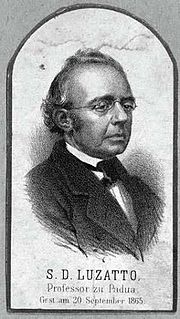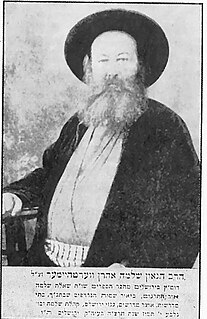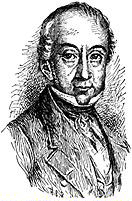Related Research Articles

Midrash is biblical exegesis by ancient Judaic authorities, using a mode of interpretation prominent in the Talmud. The word itself means "textual interpretation", "study".

Shlomo Yitzchaki, today generally known by the acronym Rashi, was a medieval French rabbi and author of a comprehensive commentary on the Talmud and commentary on the Hebrew Bible. Acclaimed for his ability to present the basic meaning of the text in a concise and lucid fashion, Rashi appeals to both learned scholars and beginner students, and his works remain a centerpiece of contemporary Jewish study. His commentary on the Talmud, which covers nearly all of the Babylonian Talmud, has been included in every edition of the Talmud since its first printing by Daniel Bomberg in the 1520s. His commentary on Tanakh—especially on the Chumash —serves as the basis for more than 300 "supercommentaries" which analyze Rashi's choice of language and citations, penned by some of the greatest names in rabbinic literature.

The Talmud is the central text of Rabbinic Judaism and the primary source of Jewish religious law (halakha) and Jewish theology. Until the advent of modernity, in nearly all Jewish communities, the Talmud was the centerpiece of Jewish cultural life and was foundational to "all Jewish thought and aspirations", serving also as "the guide for the daily life" of Jews.

The Tosafot,Tosafos or Tosfot are medieval commentaries on the Talmud. They take the form of critical and explanatory glosses, printed, in almost all Talmud editions, on the outer margin and opposite Rashi's notes.

Hai ben Sherira better known as Hai Gaon, was a medieval Jewish theologian, rabbi and scholar who served as Gaon of the Talmudic academy of Pumbedita during the early 11th century. He was born in 939 and died on March 28, 1038. He received his Talmudic education from his father, Sherira ben Hanina, and in early life acted as his assistant in teaching. In his forty-fourth year he became associated with his father as "av bet din," and with him delivered many joint decisions. According to Sefer HaKabbalah of Rabbi Abraham ben David (Ravad), he was the last of the Geonim.
Nissim ben Jacob, was a rabbi best known today for his Talmudic commentary ha-Mafteach, by which title he is also known.

Aggadah is the non-legalistic exegesis which appears in the classical rabbinic literature of Judaism, particularly the Talmud and Midrash. In general, Aggadah is a compendium of rabbinic texts that incorporates folklore, historical anecdotes, moral exhortations, and practical advice in various spheres, from business to medicine.

Samuel David Luzzatto was an Italian Jewish scholar, poet, and a member of the Wissenschaft des Judentums movement. He is also known by his Hebrew acronym, Shadal.

Rabbi Solomon Aaron Wertheimer, was a Hungarian rabbi, scholar, and seller of rare books.

Solomon Buber was a Jewish Galician scholar and editor of Hebrew works. He is especially remembered for his editions of Midrash and other medieval Jewish manuscripts, and for the pioneering research surrounding those texts.
Tobiah ben Eliezer was a Talmudist and poet of the 11th century, author of Lekach Tov or Pesikta Zutarta, a midrashic commentary on the Pentateuch and the Five Megillot.

Sifra is the Halakhic midrash to the Book of Leviticus. It is frequently quoted in the Talmud, and the study of it followed that of the Mishnah. Like Leviticus itself, the midrash is occasionally called "Torat Kohanim", and in two passages also "Sifra debei Rav". According to Leḳaḥ Ṭob this latter title was applied originally to the third book of the Pentateuch because Leviticus was the first book studied in the elementary school, and it was subsequently extended to the midrash; but this explanation is contradicted by analogous expressions such as "Sifre debei Rav" and, in a broader sense, "ketubot debei Rav" and "teḳi'ata debei Rav".

Midrash Tanhuma is the name given to three different collections of Pentateuch aggadot; two are extant, while the third is known only through citations. These midrashim, although bearing the name of R. Tanḥuma, must not be regarded as having been written or edited by him. They were so named merely because they consist partly of homilies originating with him and partly of homilies by aggadic teachers who followed the style of R. Tanḥuma. It is possible that R. Tanḥuma himself preserved his homilies, and that his collection was used by the editors of the midrash. The three collections were edited at different times; they will, therefore, be treated in chronological order. According to Samuel Berman's most recent research and translation on Midrash-Tanhuma, the "earliest manuscript of this text was compiled in late 8th or 9th century".
Abraham ben Isaac of Narbonne was a Provençal rabbi, also known as Raavad II, and author of the halachic work Ha-Eshkol.
Joshua Boaz ben Simon Baruch, also known as the Shiltei Giborim after a work he authored, was a prominent Talmudist who lived at Sabbioneta, and later at Savigliano. He was a descendant of an old Judæo-Spanish family, and probably settled in Italy after the banishment of the Jews from Spain.

Johann Christoph Wolf was a German Christian Hebraist, polyhistor, and collector of books.

Isaac (Isaak) Hirsch Weiss, also Eisik Hirsch Weiss, was an Austrian Talmudist and historian of literature born at Groß Meseritsch, Habsburg Moravia.
Derekh Eretz Rabbah is one of the minor tractates of the Talmud. In the editions of the latter the tractate Derekh Eretz consists of three divisions:
- Derek Eretz Rabbah
- Derek Eretz Zuta
- Perek ha-Shalom

Isaac Samuel Reggio (YaShaR) was an Austro-Italian scholar and rabbi. He was born and died in Gorizia. Reggio studied Hebrew and rabbinics under his father, Abraham Vita, later rabbi of Gorizia, acquiring at the same time in the gymnasium a knowledge of secular science and languages. Reggio's father, one of the liberal rabbis who supported Hartwig Wessely, paid special attention to the religious instruction of his son, who displayed unusual aptitude in Hebrew, and at the age of fourteen wrote a metrical dirge on the death of Moses Ḥefeẓ, rabbi of Gorizia.
Domenico Gerosolimitano, originally Rabbi Samuel Vivas of Jerusalem, was a notable ecclesiastical censor of Hebrew books. His Sefer Hazikkuk, the Hebrew equivalent of Index Expurgatorius, played an important role in the censorship of Hebrew books in the late 16th and early 17th centuries.
References
- Works by and about Blaisio Ugolino in University Library JCS Frankfurt am Main: Digital Collections Judaica
- http://153.106.5.3/ccel/schaff/encyc12/Page_54.html%5B%5D
-
 This article incorporates text from a publication now in the public domain : Singer, Isidore; et al., eds. (1901–1906). "Ugolino, Blaisio". The Jewish Encyclopedia . New York: Funk & Wagnalls.
This article incorporates text from a publication now in the public domain : Singer, Isidore; et al., eds. (1901–1906). "Ugolino, Blaisio". The Jewish Encyclopedia . New York: Funk & Wagnalls.